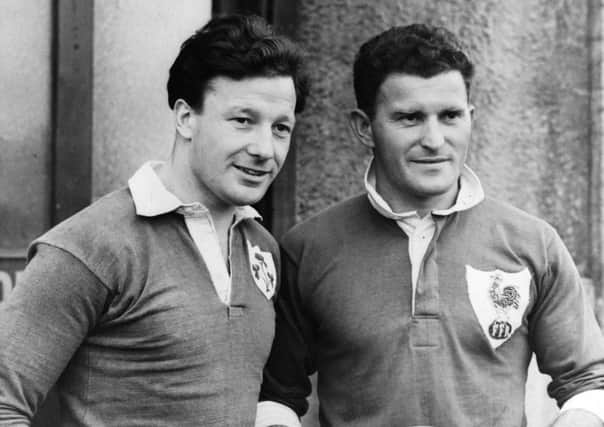Allan Massie: Imagine – better than Gibson or BOD


I don’t know that I ever watched him on grainy black-and-white TV – probably not. But I saw him play twice at Murrayfield, in 1953 and 1957. The second was a game played in appalling conditions, a beastly cold winter day with sleet and wind. I have only one memory, other than the weather, of the match, which Ireland won 5-3. It was Jimmy Maxwell of Langholm’s debut. Picked as a running stand-off, he was switched into the centre after about ten minutes, with Tom McClung, who had a mighty boot, taking his place. I don’t think poor Maxwell got a single pass. So the SRU selectors in their infinite wisdom dropped him for the Calcutta Cup match at Twickenham a couple of weeks later. The Ireland game was his only cap.
But I remember the 1953 match clearly. It was a sunny day and Ireland won 26-8, scoring six tries, a try being worth only 3 points then. Kyle controlled the game from start to finish. The Scotland back-row couldn’t lay a hand on him, even though the old offside law, which required you to be only behind the ball, was paradise for flankers, who could detach themselves from the set scrum as soon as they pleased and advance on the opposing half-backs. Lineouts in those days could stretch across the field, and there has been no period in the history of the game when midfield backs had so little space. But Kyle found space, almost, it seemed, whenever he chose. Like all the great stand-offs (think of Dan Carter) he had perfect balance and could accelerate without seeming to change pace. He could swerve and had a dizzying side-step. I had a school friend from Ulster who adored Kyle. He used to say that Jack always made a break between the 20th and 25th minute of the second half, scoring a try or making one. This was an exaggeration, doubtless, but it is true that he was sparing in his attempts to break, and, because he was sparing, they usually succeeded. That lovely sports journalist Frank Keating said that he often appeared detached until “with a dip of his hips and an electric change of gear he would leave the floundering cover rooted as trees as he touched down under the posts.”
Advertisement
Hide AdAdvertisement
Hide AdHe was also the master of all kinds of kick, with either foot, except, oddly, the drop goal, kicking only one of these in his 46 internationals.
It’s likely that not even the Irish public ever saw the best of him, because, by all accounts, he shone at his brightest on the 1950 Lions tour of Australia and New Zealand. Those were the days – how distant they seem – when the Lions nearly always came second-best up front, but dazzled behind the scrum, and Kyle with brilliant Welsh three-quarters like Bleddyn Williams, Jack Matthews and the Olympic sprinter Ken Jones outside him, was the dazzlingest of them all. Terry McLean, the doyen of New Zealand rugby journalists , wrote that “Kyle’s football always had an air of genius”.
Kyle himself said that almost everything he did was just instinctive, and I daresay that in these days when the only coach an international team had was the bus that took them to the ground, there was a good deal of truth in this. Nevertheless, Ken Scotland, another who played his finest rugby for the Lions in New Zealand on the 1959 tour, and who was the subject of equally ecstatic praise from Terry McLean, once remarked to me that players of his day had to think about tactics and strategy for themselves, precisely because they weren’t coached as modern players are.
If you want to know how good Kyle was, consider this. An Irish poll named him as Ireland’s greatest player of all time. The runners-up were Mike Gibson and Brian O’Driscoll. Many whose rugby memories date, post-Kyle, from the Sixties and Seventies still judge Gibson the most complete rugby back, whether at stand-off or centre, whom they have seen. As for O’Driscoll he is simply the best of our time, as they said of the great eighteenth century racehorse, Eclipse: “Eclipse first and the rest nowhere”. Those who never saw Jack Kyle play can only wonder at the thought of someone better than Gibson and O’Driscoll. But that’s how good he was. Of No 10s of the last dozen years, only Dan Carter has something of Kyle about him,
A last vivid mental image. His scrum-half throws out a bad pass which he has to check and turn to collect. Predatory wing-forwards rush up. With a swing of the hips and a shimmy, he coolly evades them and, as they sprawl on the turf, bangs the ball forty yards up the field into touch. Not even the Welsh have had a stand-off as good as Jack Kyle – not even Cliff Morgan, Barry John, Phil Bennett and Jonathan Davies.